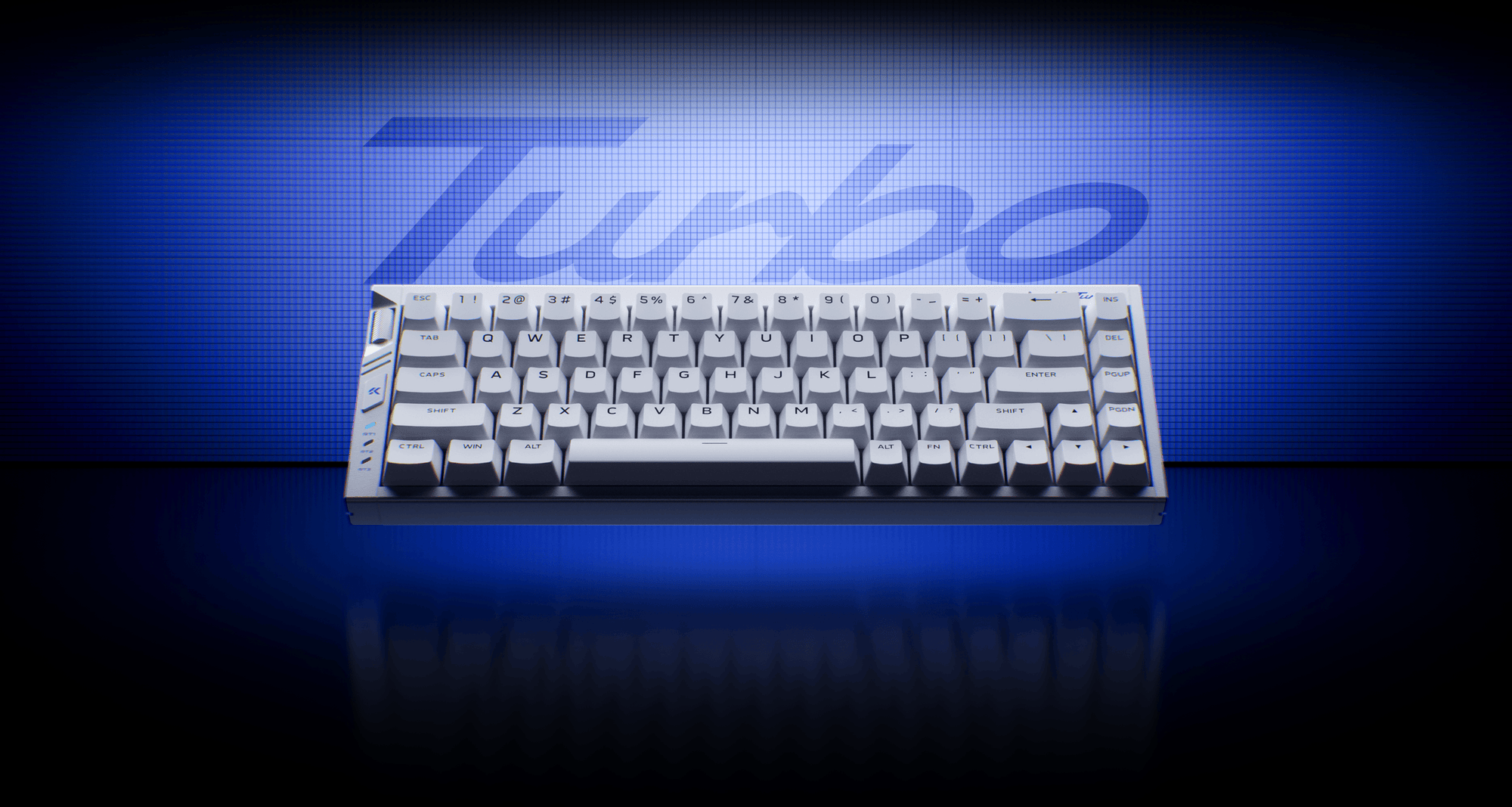- Mchose unveils the Ace 68 Turbo with an advertised 16,000 Hz polling rate
- Uses dual-core architecture and Hall-effect switches for adjustable actuation
- Launch price lands at a surprisingly accessible 119 dollars
- Real-world latency gains remain debated across competitive and casual play.
A mechanical keyboard that polls input sixteen thousand times per second sounds like something pulled from a sci-fi prop table. Yet here we are. Mchose has launched a keyboard, it claims is the world’s first 16K polling rate model, and it has sparked a wave of excitement and skepticism in equal measure. The question is simple. Does it matter?
What Happened
On November 7, 2025, Mchose introduced the Ace 68 Turbo. The company calls it the world’s first 16,000 Hz polling rate keyboard. The claim is bold given that most gaming boards today top out at 1000 Hz, while premium esports-oriented models run at 4000 or 8000 Hz.
KitGuru’s first look broke down the standout hardware. Mchose uses a dual-core, dual-chip design to keep the 16K polling stable across the entire key matrix. The board also swaps traditional mechanical switches for Hall-effect switches. These are magnetic switches that allow users to tune actuation points, shorten travel, and adjust how each key feels under load.
What surprised most observers was the launch price. At 119 dollars, the Ace 68 Turbo sits far below the boutique price tags attached to other “flagship” esports keyboards. Combined with the technical claims, the price instantly fueled discussion across Reddit groups and peripheral communities.
Why This Keyboard Is Creating Buzz

Polling rate rarely enters mainstream conversation. Most gamers never adjust it. But sixteen thousand hertz breaks the curve. It gives hardware enthusiasts a shiny new spec to point at, and competitive players a fresh number to obsess over. Even for users who never notice a difference, the jump sounds substantial and triggers the same fascination that surrounded 8K mice a few years ago.
Another factor is the timing. Hall-effect boards have moved from niche to trendy thanks to their durability and customization. Adding a 16K polling architecture on top creates a product that feels experimental yet practical. That makes the Ace 68 Turbo something more than a marketing stunt.

And again, the price. You usually see frontier-tech peripherals debut at sky-high prices. Mchose seems determined to push the concept into the general market rather than lock it behind a premium wall.
Does 16K Polling Rate Actually Make a Difference?
This is the real question. A 16,000 Hz polling rate drops raw input latency to fractions of a millisecond. On paper, it delivers cleaner, faster transmission from switch to system. But a keyboard is only one link in a long chain.
Your monitor’s refresh rate, your GPU frame timing, Windows input scheduling, and USB controller behavior all have larger impacts on input arrival than keyboard polling alone. Plenty of players using 8K boards today report that they can’t reliably distinguish them from 1K boards in blind tests.

Where you might see measurable benefit is in games that react sharply to single-tap precision. Think rhythm titles or ultra-high-level FPS movement tech. Even then, the difference sits in the margins. For many players, shaving off a few hundred microseconds will never translate into visible or tactile improvement.
The Hardware Story Behind the Hype
The 16K polling rate is not the Ace 68 Turbo’s only interesting trait. The dual-core layout is designed to handle high-frequency scanning without losing stability. This matters because fast polling can create electrical noise or inconsistent reporting if the board’s firmware cannot keep up.
Hall-effect switches add another layer. Magnetic sensing removes the need for physical metal contacts. This allows for smoother actuation, better longevity, and adjustable trigger points. Many enthusiast boards now use these switches to give players more control over key feel.

The combination of Hall-effect switches and a high-frequency scan loop means the Ace 68 Turbo is built for low latency at every stage. It reflects a larger trend in gaming peripherals. Companies are chasing both precision and personalization rather than just RGB and build quality.
Counterpoints And Risks
As with any early technology, there are caveats. First, the actual benefit of 16K polling depends heavily on the larger input pipeline. If Windows, game engines, or USB controllers do not fully optimize for 16K, the gains may be smaller than advertised.
Second, software support matters. Polling this quickly generates more data and more frequent interrupts. If the drivers or firmware are not tuned properly, users could see inconsistent performance or compatibility issues. New specs often ride on early enthusiasm, only to hit real limitations once they reach everyday setups.
Finally, marketing always walks a fine line. If consumers discover the performance uplift is modest in practice, the narrative could shift toward “overkill” rather than innovation. The industry has seen this happen before with mice marketed at 20,000 DPI or higher.
What’s Next
The Ace 68 Turbo marks a new stage in peripheral experimentation. Whether 16K becomes the next big standard or remains a niche bragging right, the technology behind it will push manufacturers to rethink latency, architecture, and customization.
For gamers, this keyboard won’t transform your skill ceiling. But it does show where the market is heading. Faster input loops, better sensing tech, and more user-tunable components are becoming accessible rather than elite.
If the future of competitive gear is built around modular design and micro-latency engineering, the Ace 68 Turbo may be remembered as the board that nudged that shift forward.
Thank you! Please share your positive feedback. 🔋
How could we improve this post? Please Help us. 😔
[Comparisons Expert]
Shehryar Khan, a seasoned PC hardware expert, brings over three years of extensive experience and a deep passion for the world of technology. With a love for building PCs and a genuine enthusiasm for exploring the latest advancements in components, his expertise shines through his work and dedication towards this field. Currently, Shehryar is rocking a custom loop setup for his built.
Get In Touch: shehryar@tech4gamers.com




